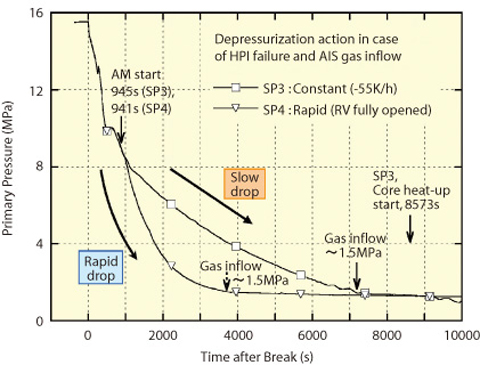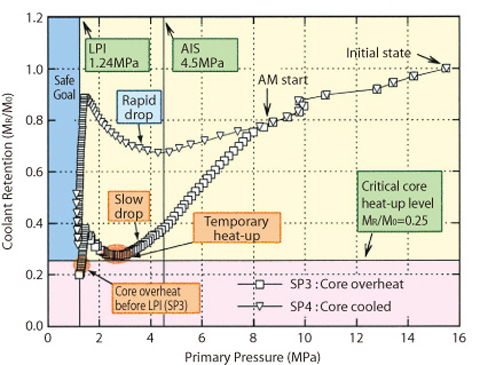
Fig.5-11 Simulated AM measures for various PWR/LOCAs

Fig.5-12 Core cooled by rapid-depressurization after bottom breakage with HPI failure and gas inflow

Fig.5-13 P-M map display useful for PWR/LOCA detection
Pressurized water reactors (PWRs) are most common type of nuclear power plants in the world. The ROSA-V program has conducted small break loss-of-coolant accident (SBLOCA) tests with a break at various locations in the Large Scale Test Facility (LSTF) to study coolant behavior and to improve analysis code capability.
Following a study on effectiveness of accident management (AM) measures for SBLOCAs at the primary loops, we verified effectiveness of AM measures for SBLOCAs at the reactor vessel bottom caused by instrument tube nozzle failure (Fig.5-11). An indication of coolant leakage around two instrument tubes was newly found at the South Texas Project reactor in USA, and effectiveness of AM measures during a bottom break LOCA became one of priority issues of the OECD/NEA ROSA project initiated by JAEA in 2005.
We conducted two tests of vessel bottom break equivalent to a 0.2% cold leg break with total HPI failure and gas inflow from the AIS tanks taking different SG depressurization actions. Fig.5-12 compares their primary pressure transients and shows that the rapid depressurization in SP4 test achieved adequate core cooling irrespective of the gas inflow while a slow and constant cooling rate at -55 K/h in SP3 test resulted in core heat-up. A reason for these different core cooling results is clear in the Fig.5-13 chart showing dependence of coolant retention on primary pressure. In the SP4 test the conditions for LPI actuation were achieved maintaining coolant amount over the critical core heat-up level by the rapid depressurization, while coolant in the SP3 test decreased to the critical level, the larger coolant discharging due to higher pressure than in the SP4 test.